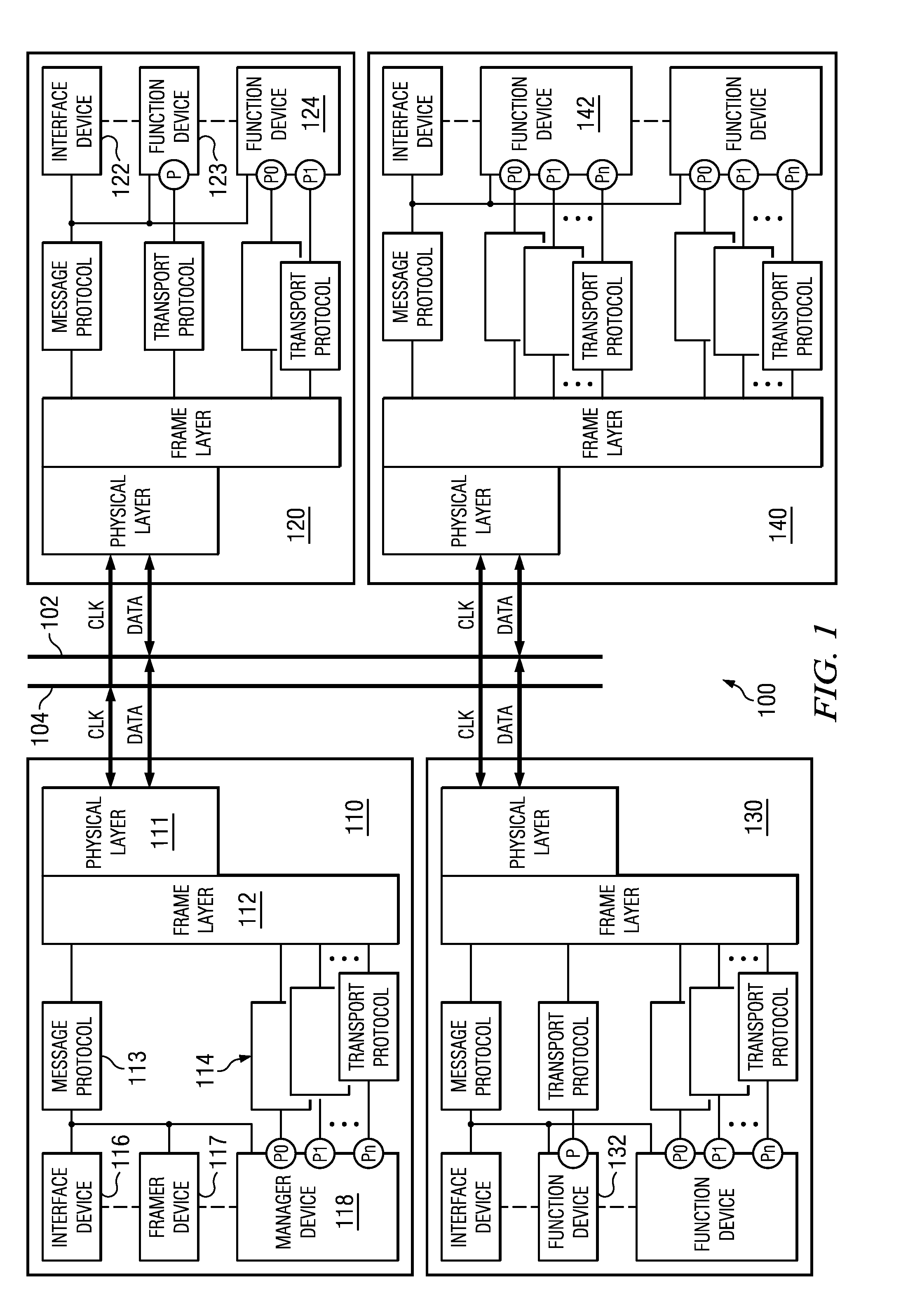In-Band Sleep Protocol for Embedded Bus
a technology of embedded bus and sleep mode, which is applied in the direction of power supply for data processing, instruments, computing, etc., can solve the problems of limiting design flexibility, limiting design flexibility, and limiting the number of bus structures, etc. access to the standard itself is currently limited to mipi alliance members
- Summary
- Abstract
- Description
- Claims
- Application Information
AI Technical Summary
Benefits of technology
Problems solved by technology
Method used
Image
Examples
Embodiment Construction
[0019]In order to utilize the benefits of placing communication modules to sleep during active call processing in a cellular phone, for example, a method is described herein in which modules may be permitted to rapidly transition into sleep mode and then be rapidly awakened using transactions defined by the SLIMbus. Entering and exiting the sleep mode is made somewhat difficult for SLIMbus based modules due to some of its inherent properties. A procedure that is defined within the SLIMbus standard requires a complete attach / detach from the bus, which is a relatively long process that requires enumeration when the module comes out of sleep mode. In the method described herein, the logical address is maintained and there is no need for re-joining the bus, therefore the time required to enter and leave sleep mode is minimal.
[0020]A simple extension to the standard SLIMBus protocol enables graceful and rapid transition in and out of sleep mode, while avoiding the need for additional sig...
PUM
 Login to View More
Login to View More Abstract
Description
Claims
Application Information
 Login to View More
Login to View More - R&D
- Intellectual Property
- Life Sciences
- Materials
- Tech Scout
- Unparalleled Data Quality
- Higher Quality Content
- 60% Fewer Hallucinations
Browse by: Latest US Patents, China's latest patents, Technical Efficacy Thesaurus, Application Domain, Technology Topic, Popular Technical Reports.
© 2025 PatSnap. All rights reserved.Legal|Privacy policy|Modern Slavery Act Transparency Statement|Sitemap|About US| Contact US: help@patsnap.com



